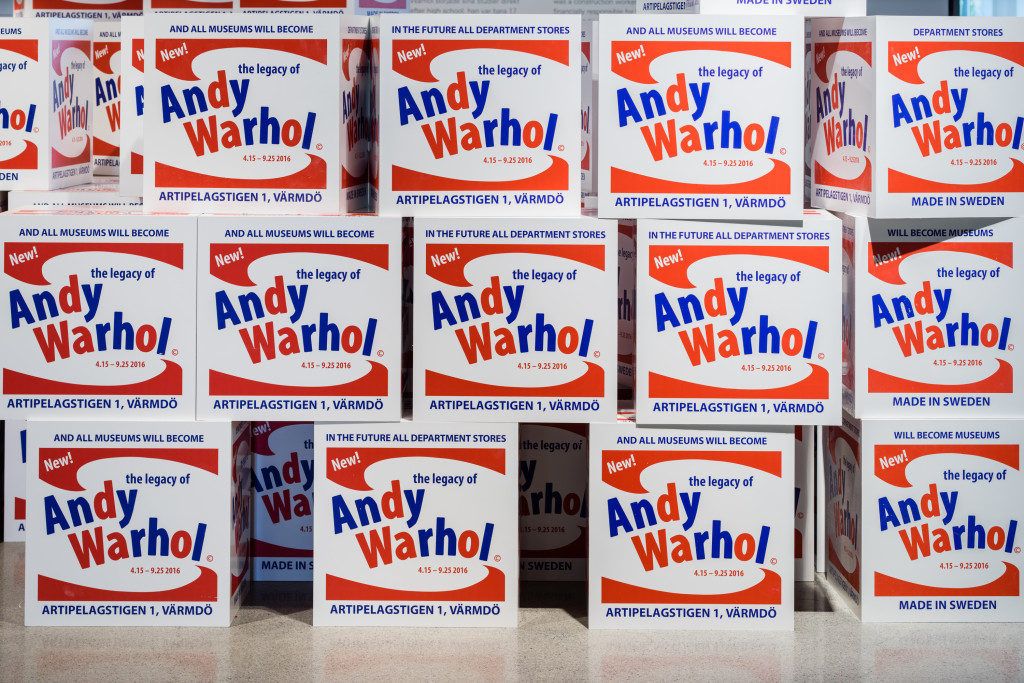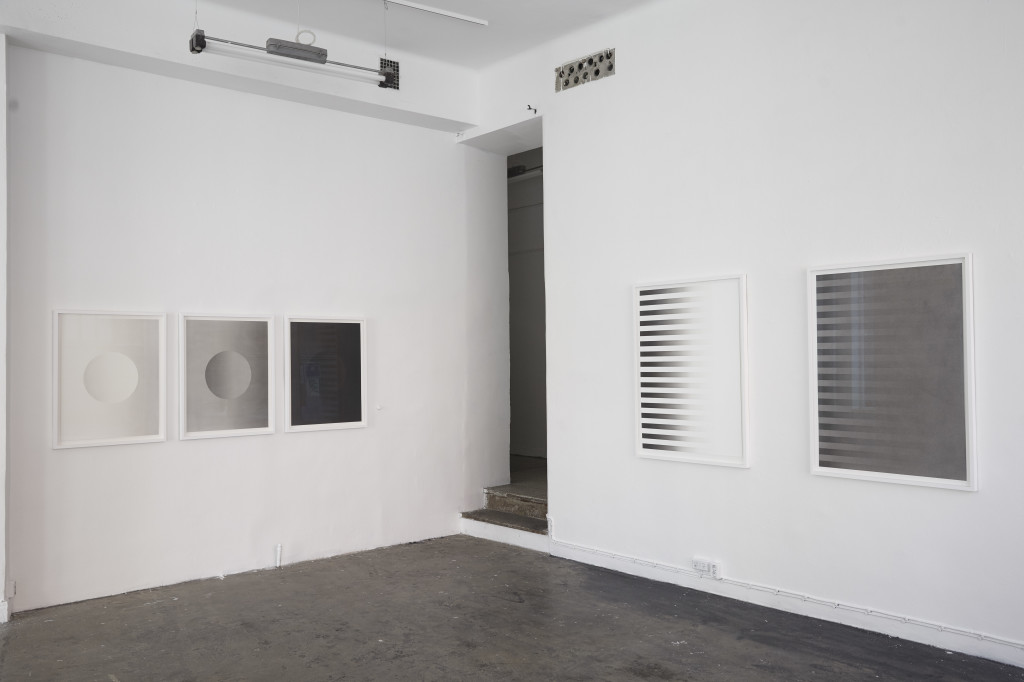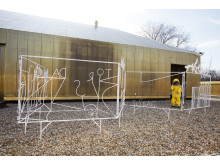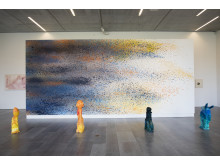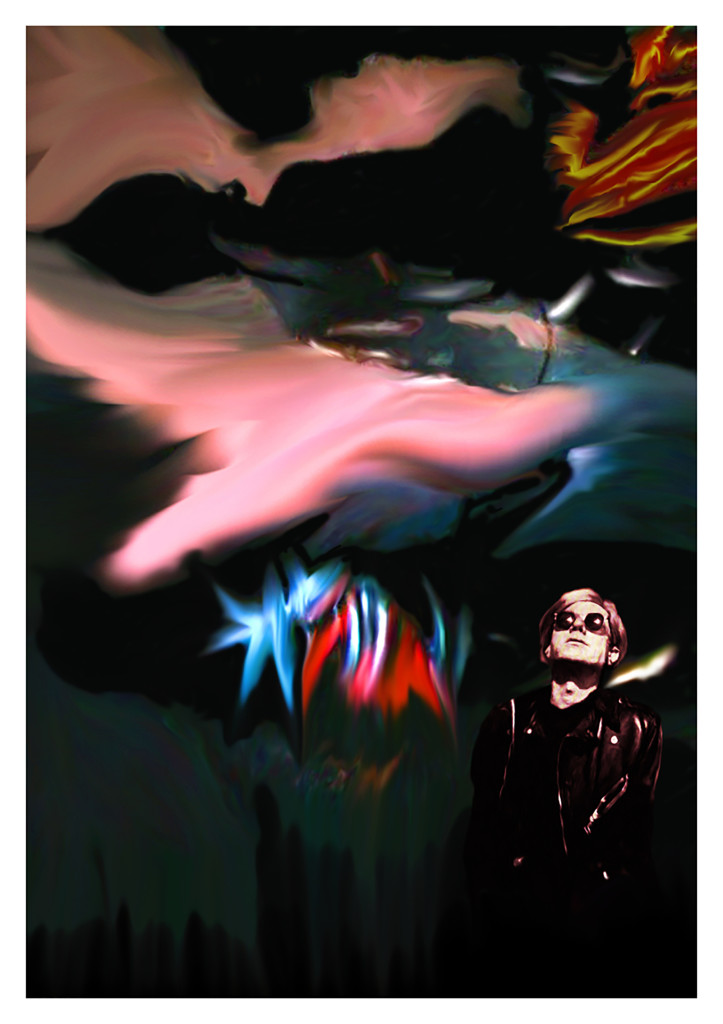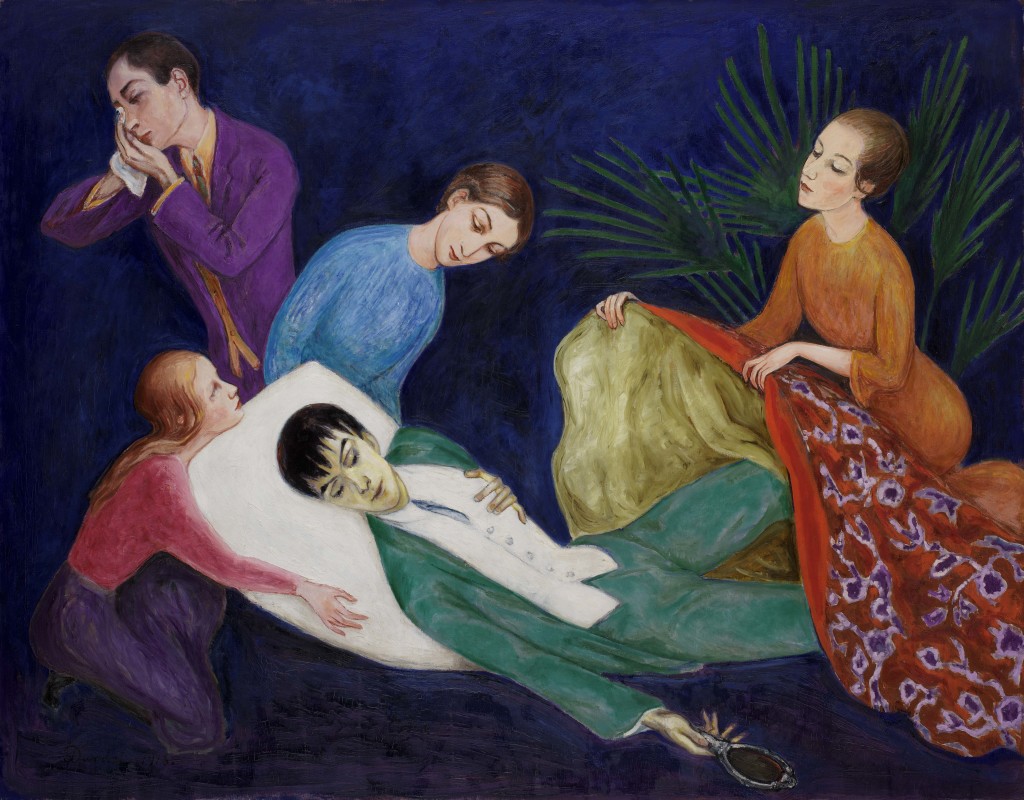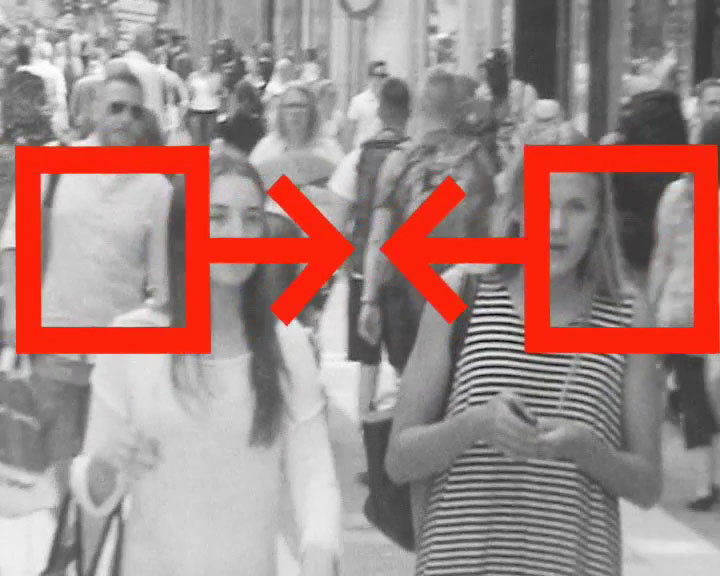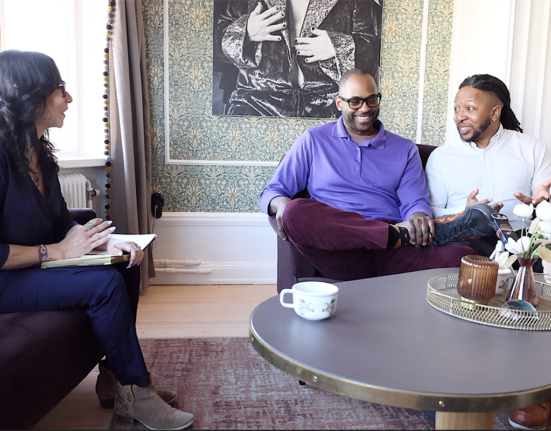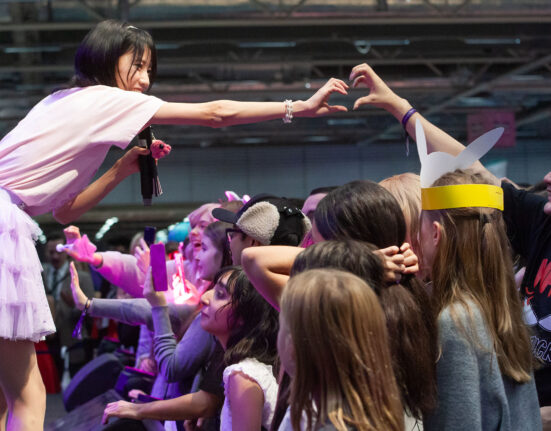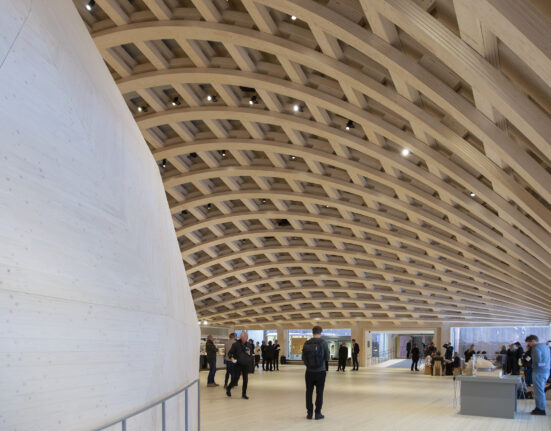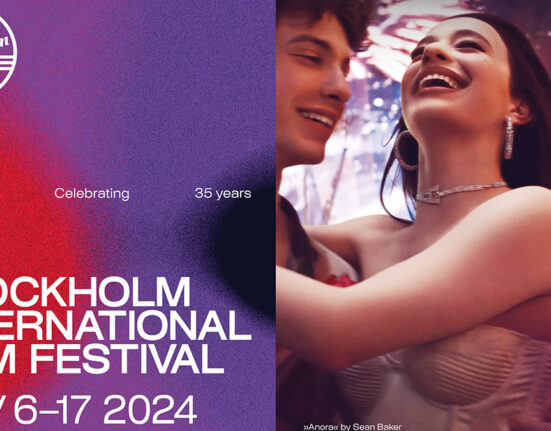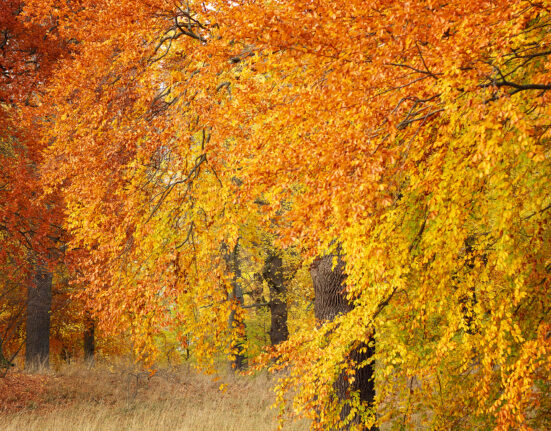May’s selection of art exhibitions focuses on European and American artists, from covering significant western art movements that have taken place over the recent couple of centuries to what art makers on both sides of the Atlantic Ocean are creating and setting trends today.
Finnish-born Juri Markkula’s art, while immediately fascinating, soon turn enigmatic when our gaze lingers on them – they border between painting, object and sculpture; are bereft of brushworks and other signs of a personal sender, invoking surfaces and image traditions.
In some works are echoes from Clement Greenberg and the continuum of American expressionism to minimalism. In others, a form of realism pushes forth easily recognizable details, like leaves and blades of grass. In “Silver to Green” is the hint of 18th century rococo frames, but where leaves and rocailles seem to be in a state of collapse and where its centre is blank – an empty surface – seemingly chiseled from the unbridled mass surrounding its heart of unified colour and foundation that is paradoxically partially divided. The unity, therefore, holds a crevice that astonishingly spans the spectrum of an additive mixture of colour with what is hidden beneath the earth.
Experiencing the Gotland-based Markkula’s work is, thus, above all a matter of a way of seeing beyond all forms of image fetishism; beyond the fast, low-calorie consumption that characterises digital appropriation. Instead, it is a quiet critique against the image’s ability to convince, as it manifests itself in an omnipresent viral existence. And we become participants in a metamorphosis where the illusory dimensions of his works offer a certain resistance – an illusion that is reinforced and concurrently punctured, rendering them with hypnotic qualities.
Exhibition: RGB Jord
Artist: Juri Markkula
When: Till 28 May
Where: Lars Bohman Gallery, KARLAVÄGEN 9, 114 24 Stockholm
Stockholm-born Anders Romare’s exhibition “Secret Society” features new paintings in watercolour and pencil on primed canvas; all loud and lively, within a limited colour scheme, and with motifs transiently figurative with abstract elements.
His works are based on photos from the 1940s and 50s; sourced from family albums of anonymous people, and include ordinary scenes, but with a tangible presence and a poignant feel of an era, such as wartime, or of bright pictures from sunny holidays by the sea.
Light against darkness is a central theme in his paintings as Romare is inspired by the shades of light in vintage black-and-white photos. Hence, a key work, aptly named Secret Society, shows a group of women engaged in some collective activity around an illuminated table in an otherwise dark room; while all his artworks constitute parallel, free-flowing documentations of their photographic originals.
Romare is also driven by curiosity to paint in low lighting and thus be surprised by the nuances in his watercolours and how this affects the end result.
Exhibition: Secret Society
Artist: Anders Romare
When: 3 May – 18 June
Where: Galleri Charlotte Lund, Johannes plan 5, 111 38 Stockholm
New Yorker Daniel Heidkamp’s paintings use imagery derived from Cape Ann in Massachusetts, featuring his recent winter outing in the adjacent town of Rockport, where lobster fishing, granite rock quarrying and art tourism are the main industries.
As his stay in an ocean side house overlooked an active lobster boat marina that is flanked by a rock quarry loading area, these scenes served as the jumping-off point for his “Warp the Wharf”, where he attempts to pump up his usual elements of naturalism — a sense of light, temperature, the texture of stone, deep open space, splashing water, foliage, and the ground.
Yet in places, the naturalism gives way to surrealism and psychedelia – DayGlo orange lobster buoys ooze and balloon into strange bulbous shapes, a rainbow colored bounce castle is lodged against an overstuffed beach house, families of trees partly conceal the wild dog, birds, snake, lobster and even the whale while a canoe-shaped native tobacco pipe is hidden in the rocks.
At the same time, his large canvases maneuver the internal scale. Stone steps become larger than life, waves crash below your feet, and miles of horizon stretch across the wide picture plane. And objects become importantly ‘inflated’; whether the buoys, bounce house, monster truck tires, houses and rocks.
Everything looks like it could burst, float away or crash, even though Heidkamp has used some elements traditional of maritime seascape painting that this picturesque region is known for. Hence, the painted port pops, the wharf warps and the peninsula pumps.
Exhibition: Pump The Peninsula
Artist: Daniel Heidkamp
When: Till 21 May
Where: LOYAL, Kammakargatan 68, 111 24 Stockholm
Stockholm-based Ylva Carlgren leaves the imperious subject matter of perfume advertising and the fetishization of the perfume flask’s alluring facets, curves and colours from her earlier works behind and allows only their illuminated backgrounds to endure. Immediate narrative has been dispensed with and room made for reduced shades set against elementary geometric forms. Left lingering are the silhouettes of a semblance of objects just outside the paper’s edge. The result: an intimation of that which is not there or that which we do not see. There is an almost unfathomable tactility to the works, as their spatiality is carefully built up by means of subtle gradations.
Inspiration is also drawn from film noir of the 1940s, where the Venetian blind serves as a psychological underscoring of the protagonist’s search for hidden truths – light filters in through the gaps in the blinds and casts a striped shadow across the room’s décor. Hence, Carlgren paints lines that fade from black, implicit objects that fade into unpainted surfaces and the veiled is left unspoken. In one series, the circle spherically floats in a space devoid of sound, with the gradual shifts in colour that eclipse from the white of the paper to grey before finally terminating in darkness.
Thus, Carlgren’s art encompasses the Japanese aesthetic consideration for the potential of shadows cast by both sun and candlelight from dawn till twilight, as well as the Western tradition of complete illuminating surfaces, thanks to electricity and the calculated elimination of shadow – shadows and stark scenes are conjoined through careful preparation and digital pre-studies, the traces of which lay bare an element of artificiality.
Her watercolours’ propensity to float outwards, and to create drama in the process, is therefore restrained so that the paper, much like a wall, becomes but a surface for a subdued play of light; yielding sparse shades that seem to lie within our very eye and mood, and creating space where silence and serenity defy emphatic narrative.
Exhibition: The Shadows’ Call
Artist: Ylva Carlgren
When: Till 19 May
Where: GSB/Gallery Steinsland Berliner, Bondegatan 70, 116 33 Stockholm
SWEDISH ART: NOW! is a most comprehensive exhibition, seeking to present and highlight a new generation of artists working in a Swedish context – from established names, such as Klara Lidén, Nathalie Djurberg and Hans Berg, to newcomers like Anna Uddenberg, Emanuel Röhss and Dimen Abdulla – to showcase the artists who have most relevantly established themselves in the past five years.
Several featured works, including Djurberg’s recent piece and Röhss’s site-specific painting, have never before been shown to the Swedish public. Others were specially designed, like Nanna Nordström’s spatial installation and Cajsa von Zeipel’s intervention in Sven-Harry’s “home” on the top floor. Its media room also features a generous programme of works by Sweden’s best video artists, as exemplified by Lina Selander and Meriç Algün Ringborg.
Initiated by Michael Elmenbeck, the co-curator of “Svenskt Mode: 2000-2015”, the founder of the arts magazine BON, and the head of exhibitions at the Stockholm gallery CF HILL, the exhibition, hence, has a two-fold aim. Firstly, it presents, visualises and clarifies what – and who – the global Swedish contemporary art scene consists of, in relation to where international tendencies are well represented. Secondly, it asks how Swedish contemporary art relates to creative expressions such as design, fashion, technology and food: does it have a Swedish ‘art wonder’? And where is its forum?
Exhibition: Swedish Art: Now!
When: Till 6 June
Where: Sven-Harry’s Museum of Art, Eastmansvägen 10-12, 116 31 Stockholm
“The Legacy of Andy Warhol” exhibition references Warhol’s development as an artist, as based on his autobiography, “Andy Warhol From A to B and Back Again”. It features some 40 of his drawings from the 1950s; showcasing the inspiration he found in daily papers and magazines that he transformed into commercial products such as advertisements, illustrations and record sleeves. This is where his fascination for glamour and commerce began, eventually becoming a central aspect of his entire oeuvre.
Works from the 1960s centre on Warhol’s artistic practice. From his breakthrough as an artist in 1962 with his now famous paintings of Campbell’s soup cans, to his output that includes pictures of accidents and film stars. It also features a reconstruction of his studio, The Factory; where art was produced on an industrial scale. Hence, Warhol challenged the notions of art’s originality and authenticity by leaving his staff to make the art works for him. And The Factory functioned as a social forum, where movies were shot with a cast of disparate people Warhol labelled as “superstars”.
Pop music in the 1960s by the rock group, The Velvet Underground, is most closely associated with Warhol and The Factory. It inspired him to produce his most complex work of art, “The Exploding Plastic Inevitable” in 1966, a multimedia show that incorporated his films, projections and dance into the music. This revolutionary physical experience inspired many other stage shows and music videos, and made music an essential part of the visual culture. Viewing a unique 1966 video installation filmed by Ronald Nameth for Warhol, accompanied by original recordings of The Velvet Underground, allows us glimpses into this aspect of his artistry.
Works from the 1970s show Warhol changing The Factory into a more business-like arts corporation while still creating art that was politically and morally emancipating, by challenging the boundaries of sexual identity. His success in Europe then thrived on portrait commissions of the rich and famous amongst New York’s hippest crowd; making him a voyeuristic observer of the artificial paradise of disco culture.
In the 1980s, Warhol’s artistic practice harmonizes with the Zeitgeist. He swapped his provocative approach with commerce, the decade’s most flagrant cultural style. And became celebrated as a trailblazer for artists such as Cindy Sherman and Richard Prince, as well as those with roots in graffiti and street art, like Jean-Michel Basquiat and Keith Haring; while others, such as Mike Bidlo, Richard Pettibone, Vik Muniz, unabashedly borrowed directly from his imagery.
Exhibition: The Legacy of Andy Warhol
When: Till 25 September
Where: ARTIPELAG, Artipelagstigen 1, Gustavsberg
The Artist exhibition discusses what it means to be an artist, in the present and past; examining roles, ideals and myths, illustrating how they have related to the values, audiences and markets of their time, and looking at the power relationships around notions of gender, ethnicity, sexuality and class.
The court painter undertaking commissions for clients is a far cry from the bohemian wishing to live a life unshackled by establishment values. Hence, you are led to consider a variety of artistic roles and the myths surrounding them, along with showing just how numerous and influential female artists have been, as they shook up accepted notions of art makers as male in the 1870s and ’80s.
In recent times, artists like Jeff Koons and Ernst Billgren resemble modern business owners in a commercial market. In the late 19th century, too, Rosa Bonheur and Anders Zorn were extremely adept at building personal brands that helped them achieve huge success in the international market. And the entrepreneurial artist played an important role even in 17th-century Netherlands, with Rembrandt and other Dutch painters finding clients among the emerging bourgeoisie.
The exhibition also illustrates artists’ attitudes to travel and other cultures through history, as exemplified by Egron Lundgren, Paul Gauguin and Ivan Aguéli. Some had concepts of foreign cultures that are full of preconceived ideas and stereotypes. Others, like Vibeke Tandberg and Meriç Algün Ringborg, worked to expose power structures and norms.
Throughout history, many artists have seen themselves as visionaries or prophets. Feminist ones like Siri Derkert and Gittan Jönsson have been critical of contemporary society while offering political visions of the future. Others have been concerned with ideals of a more spiritual nature. This might involve connecting the onlooker with inner worlds and mystical dimensions, as early 20th-century modernists Hilma af Klint and Vasily Kandinsky did.
Exhibition: The Artist
When: Till 4 September
Where: National Museum @ Konstakademien, Fredsgatan 12, Stockholm
THISWAY is the first major exhibition in Sweden by British conceptual artist Stephen Willats. Over the past year, Willats has worked closely with Index and a group of Stockholm residents on this newly commissioned project, which is based on workshops and interviews, to produce photo collages and films.
Willats’ discussion with participants centered on ways change plays out in people’s lives. Using personal stories and images of objects and views with personal significance, the work showcases the larger dynamic of transformation, where the personal intersects with socioeconomic conditions.
Hence, a senior nurse has changed her career after significantly suffering from difficult working situations. Another had escaped from Iraq to Sweden as a refugee and is re-establishing himself as an artist. The third, having just finished school, is confronting a situation in which everything is possible.
What the stories share is an interest in the moment in which social forces collide with desires for self-determination; exemplifying Willats’ oeuvre of engaging with social relations and art’s potential to document and interact with people’s lives for artistic interrogation. And the exhibition functions as a model for how the material world is inhabited and structured through power relations, with different created systems of meaning and counter-relations.
In addition to the new works, collages and diagram drawings by Stephen Willats will be shown in Index.
The exhibition is made possible through a project grant by Kulturrådet – The Swedish Arts Council; the generous support from Arts Council England, British Council, the Henry Moore Foundation and the Diversity Art Forum; and further support by ACM – Ad City Media and Husby Centrum.
Exhibition: THISWAY
Artist: Stephen Willats
When: Till 29 May
Where:
(a) Index – The Swedish Contemporary Art Foundation, Kungsbro strand 19, 112 26 Stockholm
(b) Husby Bibliotek, Edvard Griegsgången 9, 164 32 Kista
(c) In shop windows on Kungsholmen
(d) Moderna Museet, Skeppsholmen, Stockholm
(e) On LED screens in Drottninggatan and Birger Jarlsgatan.
Information and photo credits: The respective galleries







